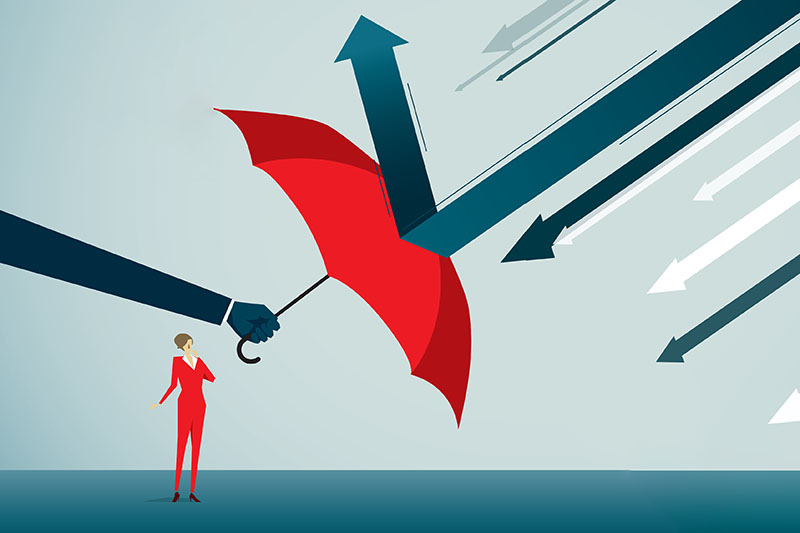Survey: Supply chain executives reveal plans to tackle disruptions over next year
Blue Yonder survey finds that in terms of software technology implementation or enhancements, leading focus is on warehouse management systems (WMS).

Blue Yonder released findings from its 2022 Supply Chain & Logistics Executive Survey earlier this week, which explored how senior executives across manufacturing, retail, third-party logistics (3PL), transportation, and warehousing plan to tackle supply chain challenges in the year ahead. The survey found that almost all (88%) businesses faced disruption over the last year, with over a quarter (26%) facing significant disruption.
Of the organizations which faced disruption, the biggest impact on supply chains were customers facing delays (58%), staff shortages (43%) and stalling of production (38%).
“It may not come as a surprise that most businesses have faced supply chain challenges over the past year, but the research demonstrates that supply chain disruptions are here to stay,” said Shri Hariharan, corporate vice president at Blue Yonder. “With continued disruptions plaguing supply chains around the globe, the need for speed, visibility, and agility is greater than ever. It is crucial for businesses to evaluate exactly where key pain points are to determine where and why to invest in intelligent technologies that can help mitigate risk and improve supply chain resiliency.”
Over half of supply chain executives (56%) said investment in their organization’s supply chain has increased over the last year, with 17% saying it increased a lot. Of those who invested in their supply chain in the past year, nearly half of respondents (49%) have invested $6 million or more. Over a quarter (26%) have invested between $6 - $10 million, and nearly a quarter (24%) have invested $10 million or more.
When asked what areas they have invested in over the last year, 57% of respondents said technology, 43% said sustainability and 40% said additional workforce. Most supply chain executives (42%) plan to focus on the implementation and enhancement of warehouse management systems (WMS) in the next 12 months, followed by transportation management systems (TMS) (36%) and order management (OMS) (32%).
Amid continued supply chain disruptions, supply chain executives are most focused on improving customer experience by keeping high-demand items in stock, providing consistent on-time delivery, increasing inventory visibility, and optimizing fulfillment options.
More than half (55%) of respondents said ensuring inventory availability for high-demand products was most important for enhancing consumer experiences as we navigate ongoing supply chain disruptions.
Nearly half of respondents cited consistent on-time delivery (43%), increasing consumer visibility regarding inventory (42%) and maintaining/optimizing fulfillment options like BOPIS, curbside pickup, and delivery (41%) as most important.
Most supply chain executives indicated they have increased both manufacturing operations and the quantity of suppliers nearshore due to the COVID-19 pandemic and geopolitical concerns. In other findings on supply strategies:
- Half of respondents (50%) said they have increased manufacturing operations nearshore due to COVID-19 and geopolitical concerns, with 21% saying they significantly increased or have concrete plans to increase operations nearshore.
- Over half of respondents (65%) increased the quantity of nearshore suppliers due to COVID-19 and geopolitical concerns. Of that group, 25% have significantly increased or have concrete plans to increase sourcing from nearshore suppliers.
When it comes to sustainability, the survey found that over half (59%) of respondents said their company paused sustainability initiatives due to the pandemic. Of those who paused their sustainability initiatives, 37% have either fully or partially reinstated them.
To maximize sustainability throughout the supply chain, 39% of respondents plan to seek out more sustainable upstream operations (materials sourcing, suppliers and manufacturing), while 38% plan to offer flexible delivery windows for online orders. This aligns with findings from Blue Yonder’s 2022 Consumer Sustainability Survey, which uncovered that 86% of consumers are willing to delay deliveries if it’s more sustainable.
Other strategies include implementing eco-friendly packaging options (33%), moving inventory closer to customers (27%), reducing one-off packages (27%), considering carbon costs like fuel efficiency (23%) and investing in technology/automation (23%).
“Even with global supply chains experiencing significant disruptions, businesses remain committed to sustainability,” said Hong Mo Yang, Senior Vice President and General Manager, Manufacturing Sector at Blue Yonder. “Blue Yonder is dedicated to helping customers achieve their organizational sustainability goals with intelligent solutions across sourcing, manufacturing, replenishment, and transportation to reduce waste, carbon footprint, energy, and other natural resource consumption.”
Read the full report for a deeper dive into the data or check out the study’s infographic here.

Article Topics
Blue Yonder News & Resources
Netlogistik partners with SVT Robotics to resell SOFTBOT platform Blue Yonder research: supply chain executives turn to technology amid prolonged challenges Labor Management: Technology + Methods = Progress Accenture acquires MacGregor Partners Top 10 Supply Chain Software Suppliers 2022 Software vendor Blue Yonder names Duncan Angove as CEO Survey: Supply chain executives reveal plans to tackle disruptions over next year More Blue YonderLatest in Materials Handling
Beckhoff USA opens new office in Austin, Texas Manhattan Associates selects TeamViewer as partner for warehouse vision picking ASME Foundation wins grant for technical workforce development The (Not So) Secret Weapons: How Key Cabinets and Asset Management Lockers Are Changing Supply Chain Operations MODEX C-Suite Interview with Harold Vanasse: The perfect blend of automation and sustainability Consultant and industry leader John M. Hill passes on at age 86 Registration open for Pack Expo International 2024 More Materials HandlingSubscribe to Materials Handling Magazine

Find out what the world's most innovative companies are doing to improve productivity in their plants and distribution centers.
Start your FREE subscription today.
April 2024 Modern Materials Handling

Latest Resources










